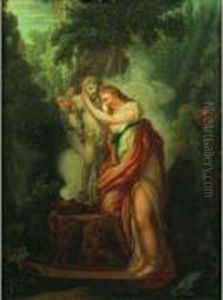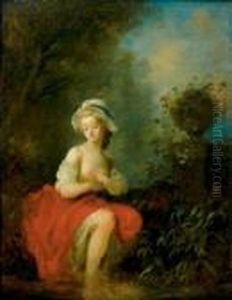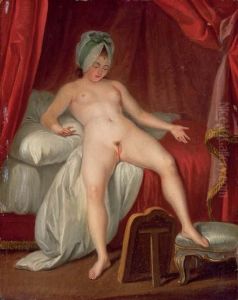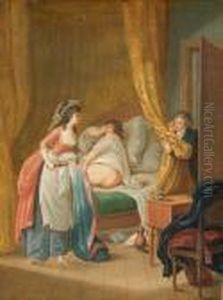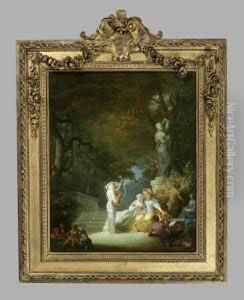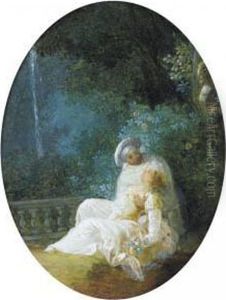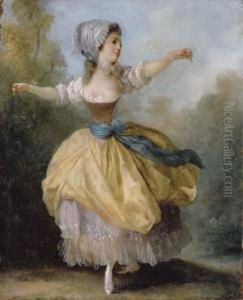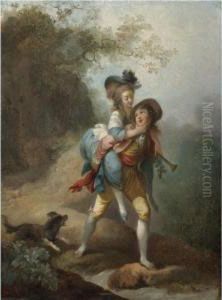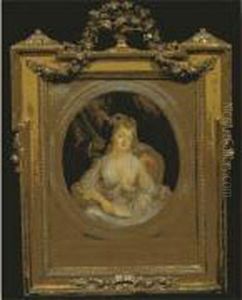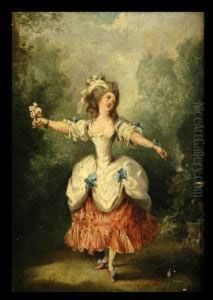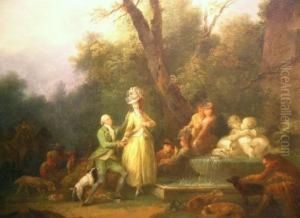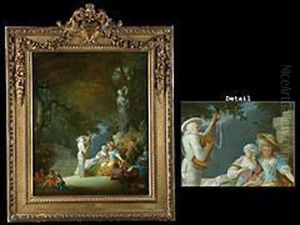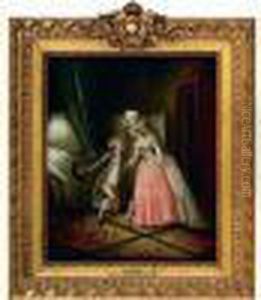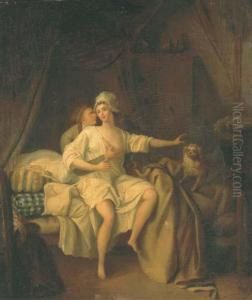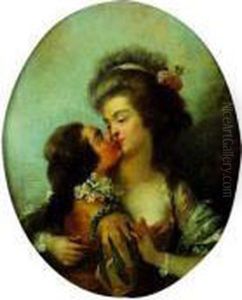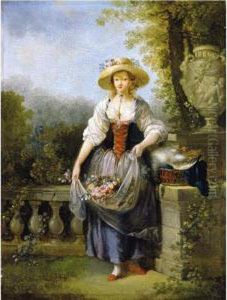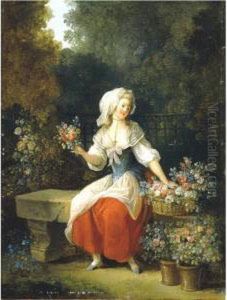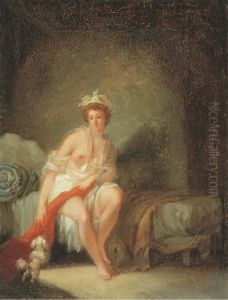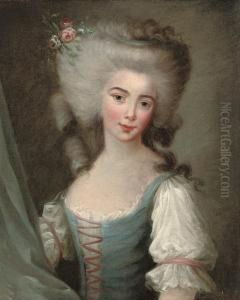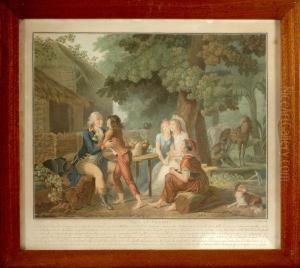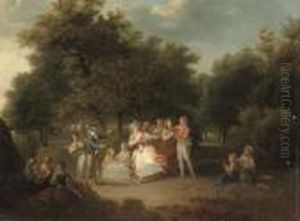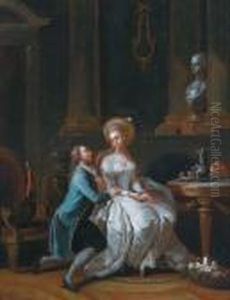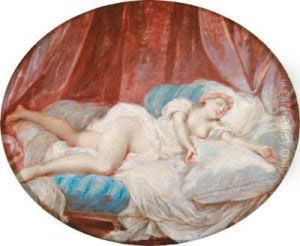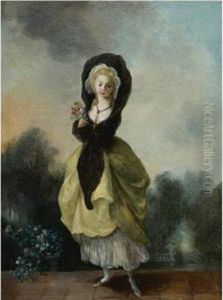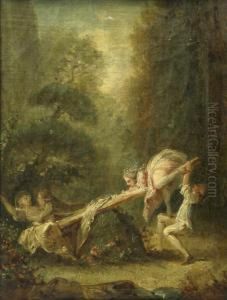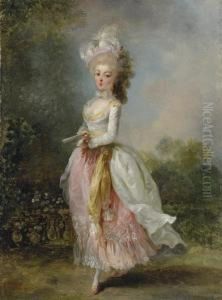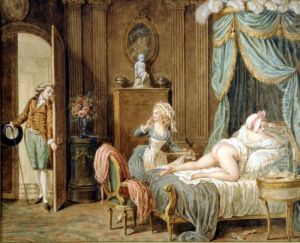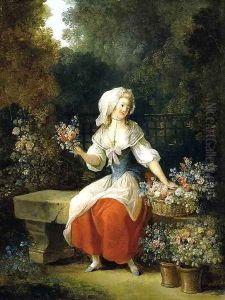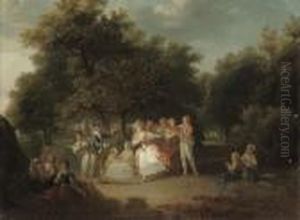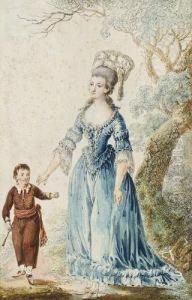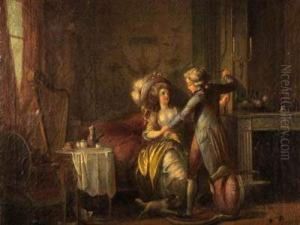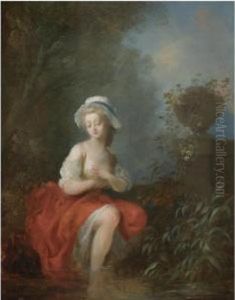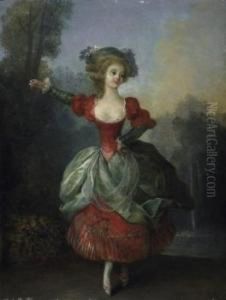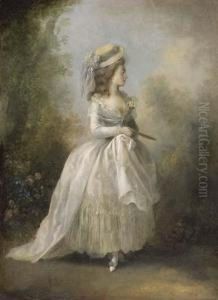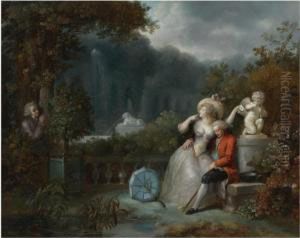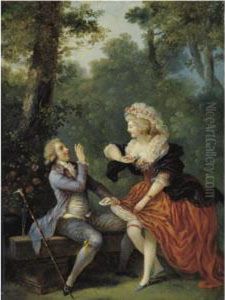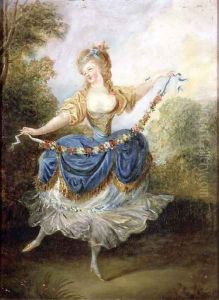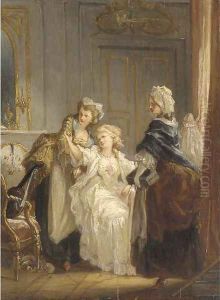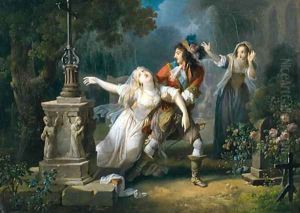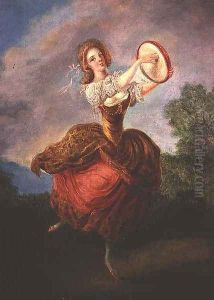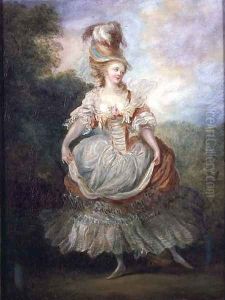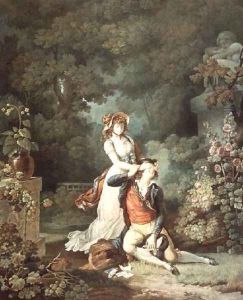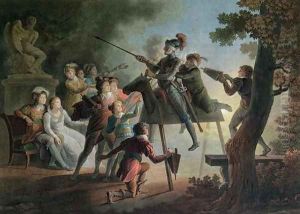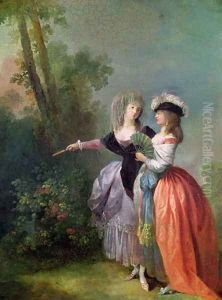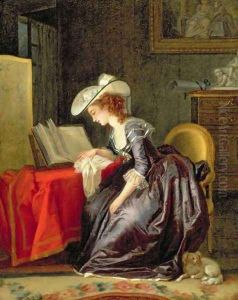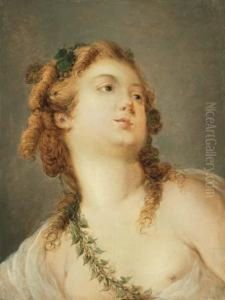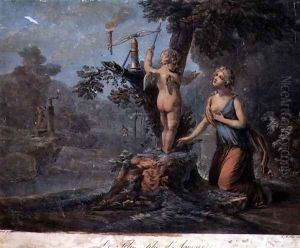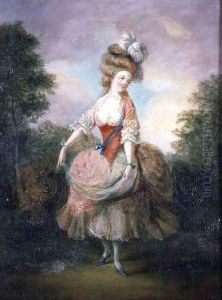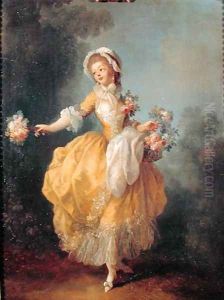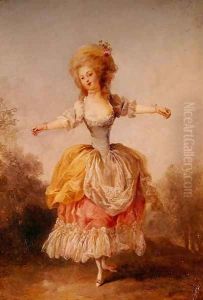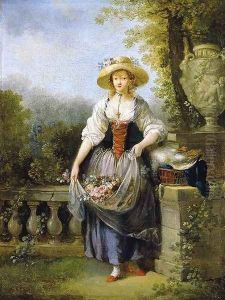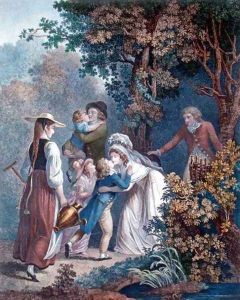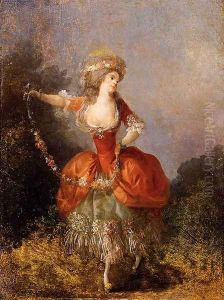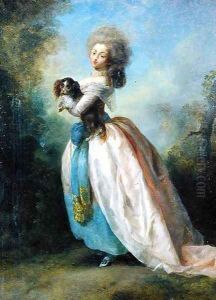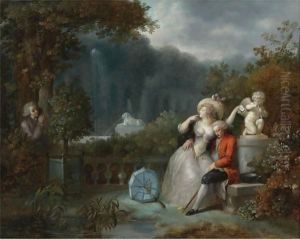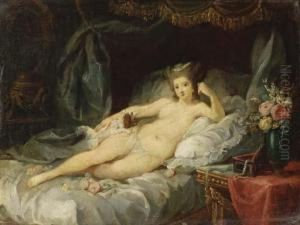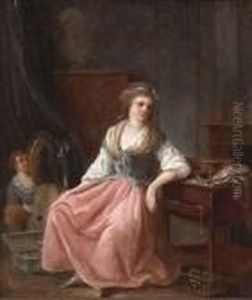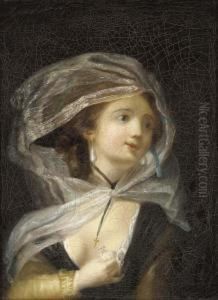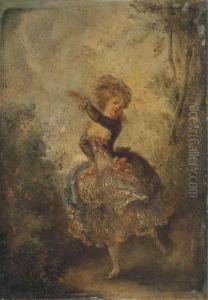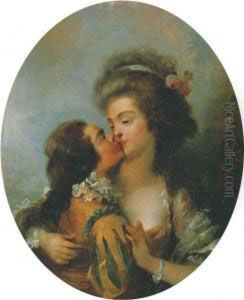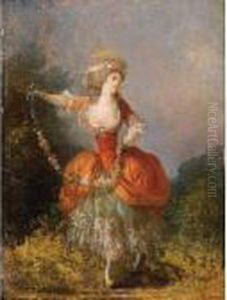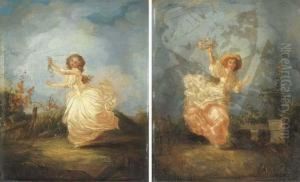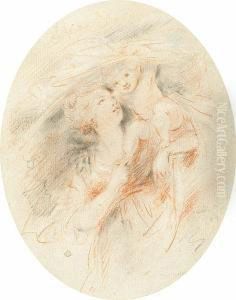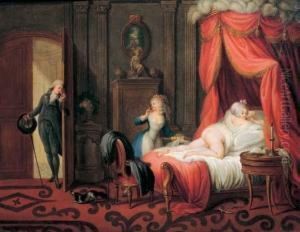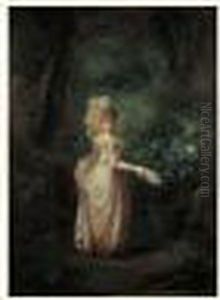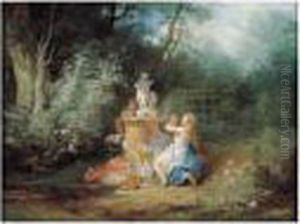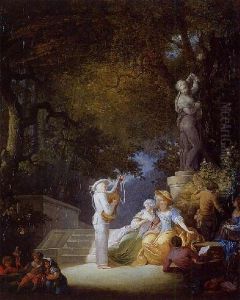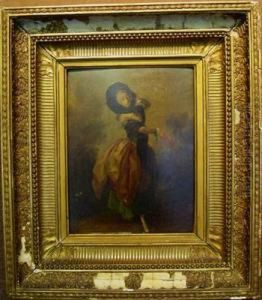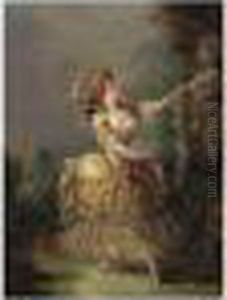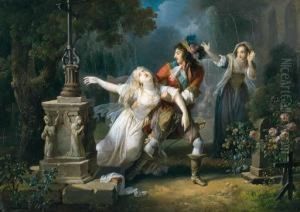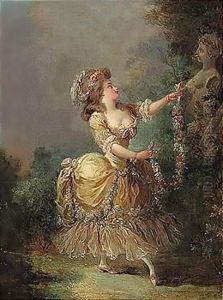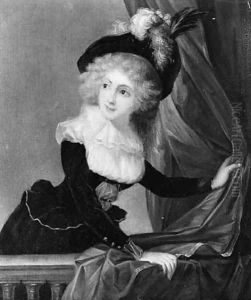Jean-Frederic Schall Paintings
Jean-Frederic Schall was a French painter born on September 5, 1752, in Strasbourg, France, during a period that witnessed the flourishing of Rococo art. His artistic career is often associated with the grace and elegance characteristic of the late Rococo and early Neoclassical movements. Schall showed an early aptitude for art, which led him to pursue formal training.
Schall's initial artistic education took place in his hometown of Strasbourg. His talent was soon recognized, and he moved to Paris to further his studies and career. In the French capital, Schall became a student of the prominent painter Jean-Baptiste Regnault, who was known for his classical and mythological subjects. Under Regnault's tutelage, Schall honed his skills and developed a penchant for depicting scenes of gallantry and festivity, often featuring amorous couples, musicians, and dancers.
During the 1780s, Schall's work gained popularity, and he became known for his delicate and refined paintings that captured the frivolity and light-heartedness of French aristocratic society prior to the French Revolution. His use of soft colors, fluid lines, and charming subject matter resonated with patrons who sought to surround themselves with the beauty and escapism his paintings offered.
Despite the political and social upheaval of the French Revolution, Schall managed to maintain a successful career. He adapted his style to fit the changing tastes of the time, moving towards the Neoclassical style that grew in popularity towards the end of the 18th century. This transition is evident in his works from this period, which exhibit a more subdued palette and a focus on moral and historical subjects.
Jean-Frederic Schall's career continued into the early 19th century, despite the shifts in artistic trends and the political landscape of France. He exhibited at the Paris Salon, the official art exhibition of the Académie des Beaux-Arts in Paris, and received critical acclaim for his work. Schall remained an active and respected member of the artistic community until his death on May 14, 1825, in Paris.
Throughout his life, Schall's art remained emblematic of the elegance and charm of the period in which he lived. His ability to capture the spirit of his time while also adapting to the changing artistic environment has left a lasting legacy. Today, his works can be found in various museums and collections, where they continue to be appreciated for their beauty and historical value.
